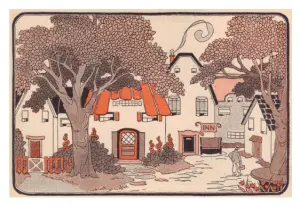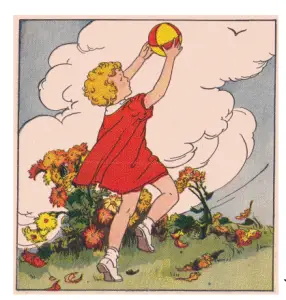
From “Bob and Judy Reader”, 1936. Illustrated by Vera Stone Norman.
By Kathie McMillan
I did not set out to collect primers. It began quite by accident when I found Friends from the Children’s Own Readers series, which was illustrated by Marguerite Davis,an illustrator I had never heard of. I was rummaging around in an unlikely flea market here in my own small rural town with the vague notion of finding material suitable to post on flickr.com. I had stumbled upon a community of people who posted vintage images from the early twentieth century, a period that I had always been interested in. I was very smitten by several contributors. When I had collected a few images for use in crafting, I decided that the least I could do was give back by posting a few images of my own. After all, I had spent hours back in those very early days of the World Wide Web searching for fairy images from the early twentieth century; and here they were all grouped together, like a giant picture book on my coffee table! It did not seem right to take and not to give back.
My rather grubby little copy of Friends sealed my fate. I had not seen many primers in the vintage community, so I felt fairly confident that I had something different to contribute. The subject matter was certainly right – I love children’s illustrations – and there were many untapped resources available on the cheap.
It was only after collecting several primers that I made a wonderful discovery. The early twentieth century was a time when a growing middle class in Europe and the US were becoming concerned with the literature available to their children. Mother Goose took wings and became extremely popular. Where the children’s literature up to 1900 leaned heavily on preaching morals, the approach after 1900 became lighter and more whimsical. Printing processes were changing rapidly.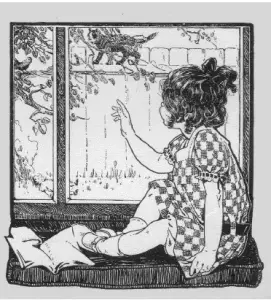 Many of the earlier primers had postage stamp sized wood-cut illustrations taken from England’schapbooks, or possibly line drawings printed on coarse paper. The printing concerns were scattered and small, although many were concentrated in New York, and Chicago. As printing for books made for children at home improved, so did the printing for educational textbooks. Competition was fierce for these books that often cost only 2-5 cents a piece, but were sold by volume. Here in the US, more and more emphasis was placed on scientific methods of teaching, reading, and many experts (superintendents of schools, professors of education at universities) developed reading series’ to go with their chosen method. Some of these were able to persuade printinghouses to use better printing methods and even to use much better materials. (what business arrangements were, I have no idea)
Many of the earlier primers had postage stamp sized wood-cut illustrations taken from England’schapbooks, or possibly line drawings printed on coarse paper. The printing concerns were scattered and small, although many were concentrated in New York, and Chicago. As printing for books made for children at home improved, so did the printing for educational textbooks. Competition was fierce for these books that often cost only 2-5 cents a piece, but were sold by volume. Here in the US, more and more emphasis was placed on scientific methods of teaching, reading, and many experts (superintendents of schools, professors of education at universities) developed reading series’ to go with their chosen method. Some of these were able to persuade printinghouses to use better printing methods and even to use much better materials. (what business arrangements were, I have no idea)
And there’s the one factor that concerned me the most— to hire well-known commercial artists such as Hazel Frazee or Frederick Richardson, or to be loyal to certain 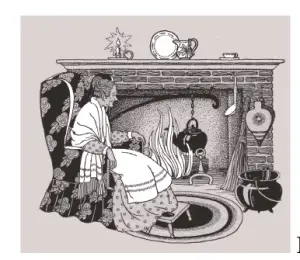 illustrators like Marguerite Davis for doing several books for the house. Primers went from being extremely boring to very rich in illustrations, indeed. And many of these illustrations followed the current trend of Art Nouveau or Art Deco.
illustrators like Marguerite Davis for doing several books for the house. Primers went from being extremely boring to very rich in illustrations, indeed. And many of these illustrations followed the current trend of Art Nouveau or Art Deco.
Even though in the beginning I knew nothing of scan clean-up and the Friends images were very messy, the response on flickr was good. I am lucky in having an antique destination in a small town nearby, and I set off for the search for more “stuff.” No one else in the area had been collecting these books, and I found several that had been languishing for years just waiting for me. I was hooked.
At first, like any new collector, I bought books in all conditions. Later, I became more judicious. Although I do not want “collector editions” I do now avoid buying books in “poor condition.” I reason that although I do clean-up on scanning, my time is valuable and I have too many books chipping or even falling apart around here. All I ask is “fair condition” for books that are harder to find, but mostly “good condition” especially if I buy from the Internet. Primers were decommissioned regularly, and sold off often. When a child got one of these cheap books at home, they often wrote or colored in it.
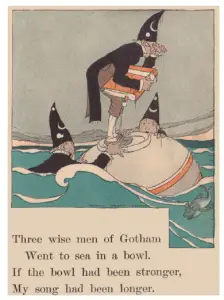
illustrated several books other than readers as well as many readers.
Tears were more likely to happen, especially with the cheaper paper. I now think twice before buying these books.
Prices reflect location. Most of these readers are very reasonable, but I found one stall in Dallas that specialized in readers, and I was scandalized by the prices demanded for very poor copies indeed. However, the chance to choose so many of my favorite artists or to complete a reader series swayed me into buying several. If I had found those same books in a more rural area, they would have been half what I paid. And the prices are going up. I have only been collecting for 5 years, but Dick and Jane books are astronomical. I believe people are discovering these other primers now.
However, I think that these primers from the 1910’s, 20’s and early 30’s are still highly available, simply because they are harder to find. They can be found on the Internet, but I prefer to look in those funky, out-of-the-way places. That is where one can find a real score! When I find a series I have never seen before, I get a real thrill. I consider some of these primers on a level with the artwork in storybooks, although it must be said that some of the printers used a dot method of imaging that does not translate well digitally.
I have to say that the emphasis on fairy stories and illustrations during the Art Nouveau period of the 1910’s leaves me wondering what the boys could have found to hold their attention. Other books focused on children’s activities, and this gives great insight into the period of the textbook. These readers are visually rich in history.
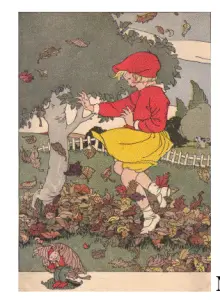
Kansas City, Missouri. Illustrator Marguerite Davis. A story of a very real Beverly and Jimmie Dale.
One of my favorite illustrators is still my very first – Marguerite Davis. I know nothing of art, but she commands my attention with almost every illustration I see of hers. I have included some of my other favorite illustrators with examples of their work. I have had to use extreme editing skills to cut it down to these few illustrations. There are so many, many more I find just as compelling. I love anything by Marguerite Davis no matter what the style.
Friendly Stories by Arthur L. Gates and Miriam Blanton Huber who copyrighted in 1930.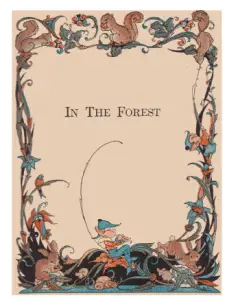
Illustrated by Kate Seredy. Published by the MacMillan Company in 1931.
Happy Town by Hazel Frazee
“Introductory Music” published by Ginn and Co., 1923. Illustrator Hazel Frazee. Editors Thaddeus
P. Giddings, Will Earhart, Ralph L. Baldwin, and Elbridge W. Newton.